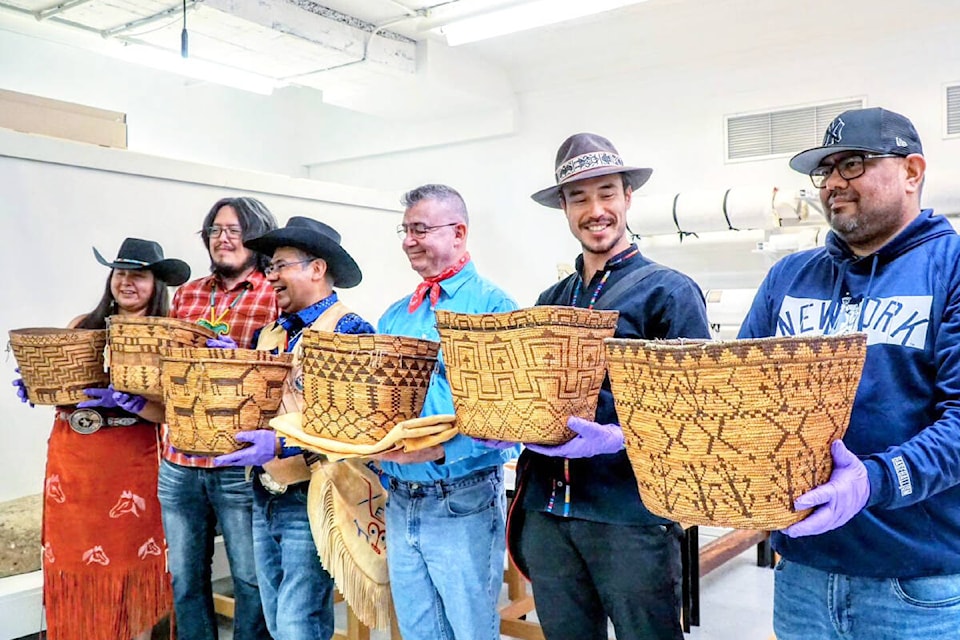Intricately woven baskets reconnected to the First Nations culture from which they came recently.
Members of a Tsilhqot’in National Government delegation who travelled to New York to visit the United Nations forum on Indigenous issues in April also visited a museum in Brooklyn.
The delegation was able to view some Tsilhqot’in baskets which were reportedly collected from Tsilhqot’in people during an expedition along the Fraser River and have been housed at the Brooklyn Museum since 1905.
The baskets were so tightly woven they could hold water, said Tsilhqot’in National Government tribal chair and Tl’etinqox Chief Joe Alphonse, who was leading the delegation at the United Nations.
“The craftsmanship of our elders just blows me away,” he said, noting the more intricately decorated with artwork items were indicated they were connected to the higher-ranked families within the community.
”Our politics, our customs, our way of being, just because it wasn’t written down doesn’t mean it wasn’t complex.”
Trevor Mack, a member of Tl’etinqox First Nation, had been looking into various “Chilcotin” artifacts around the world and happened to be in New York when the delegation was there.
The connections of his research, museum contacts and the timing of the delegation all came together to make possible a visit to the museum by the group to visit the artifacts in person.
Mack said he feels the time is right for communities to repatriate items which have been in the hands of museums and collections around the world.
“When we’re looking at the revitalization of Tsilhqot’in culture, what better way than bringing these Tsilhqot’in objects back,” he said.
“These baskets were made to hold things, they were made to hold abundance,” said Mack, adding he hopes the repatriation of these items creates a new energy and resurgence of culture which brings new abundance to the community.
The group visiting the museum held a ceremony around the baskets and sang some traditional songs.
Mack said holding the baskets was surreal.
“It’s like this sacred geometry that creates an entirely new feeling.”
Mack said he hopes there can eventually be a place where artifacts like this can be kept and used within ceremony.
Chief Alphonse said the process has started to be able to bring more of these items back to the territory and these baskets could be the first items to be repatriated.
“(It is) definitely a learning process for us,” he said.
The first thing will be to determine where an archive and museum facility could be located.
“That stuff has to be protected, first and foremost,” said Alphonse.
READ MORE: The Xeni Gwet’in Traverse, Riceboy Sleeps to be screened by Williams Lake Film Club
READ MORE: Williams Lake river valley trail reopens partially after flood damage shuttered it three years ago
Do you have a comment about this story? email:
ruth.lloyd@wltribune.com
Like us on Facebook and follow us on Twitter.
